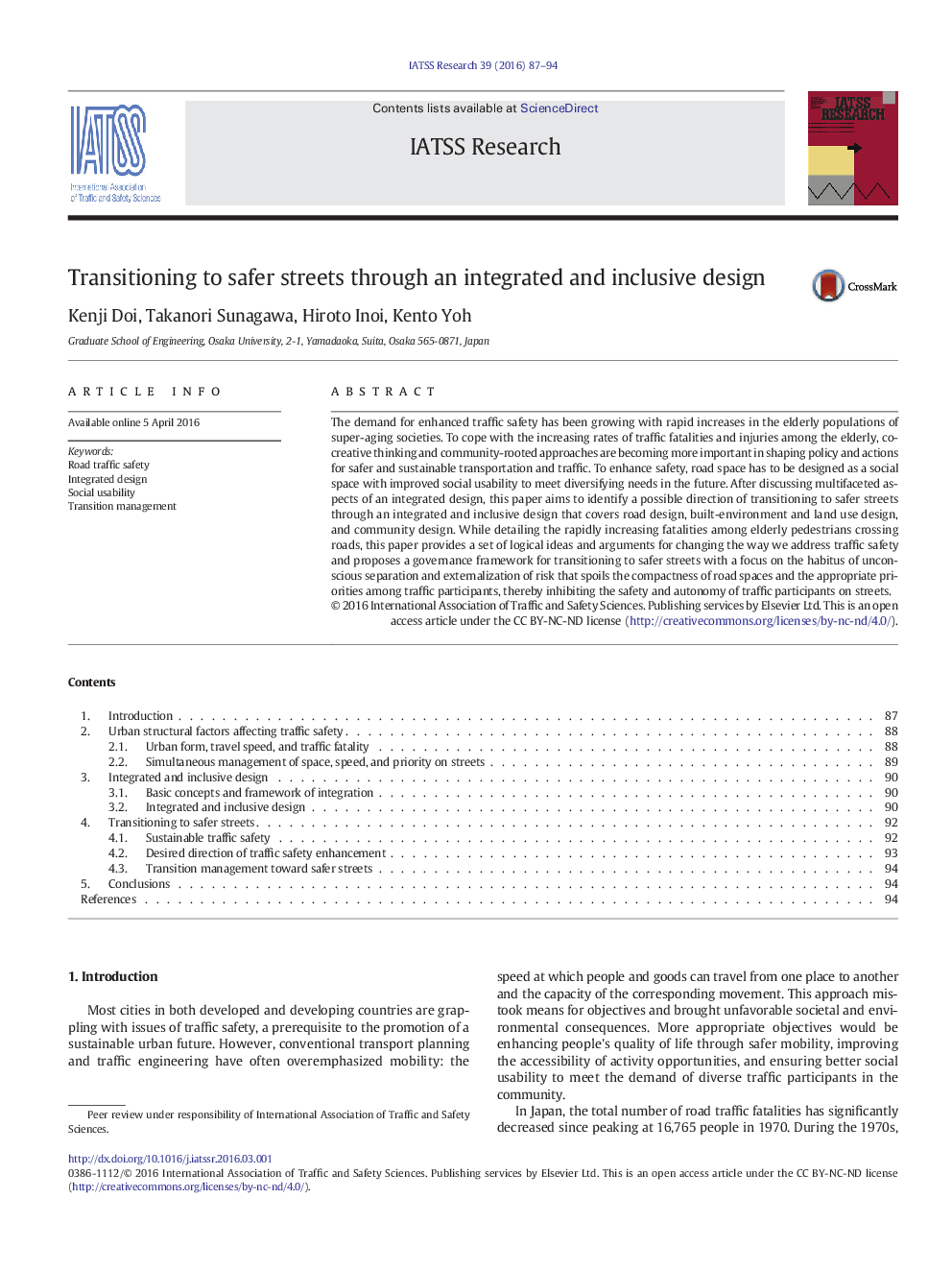| Article ID | Journal | Published Year | Pages | File Type |
|---|---|---|---|---|
| 1104599 | IATSS Research | 2016 | 8 Pages |
•Integrated design of streets, built environments and land use, and communities.•Governance framework of a transitioning to safer streets in a super-aging society.•There is a strong relationship between urban density, travel speed, and traffic fatality.•Road space should be designed as social space with emphasis on social usability.•Integrated and inclusive design of road space leads to safer streets for a community.
The demand for enhanced traffic safety has been growing with rapid increases in the elderly populations of super-aging societies. To cope with the increasing rates of traffic fatalities and injuries among the elderly, co-creative thinking and community-rooted approaches are becoming more important in shaping policy and actions for safer and sustainable transportation and traffic. To enhance safety, road space has to be designed as a social space with improved social usability to meet diversifying needs in the future. After discussing multifaceted aspects of an integrated design, this paper aims to identify a possible direction of transitioning to safer streets through an integrated and inclusive design that covers road design, built-environment and land use design, and community design. While detailing the rapidly increasing fatalities among elderly pedestrians crossing roads, this paper provides a set of logical ideas and arguments for changing the way we address traffic safety and proposes a governance framework for transitioning to safer streets with a focus on the habitus of unconscious separation and externalization of risk that spoils the compactness of road spaces and the appropriate priorities among traffic participants, thereby inhibiting the safety and autonomy of traffic participants on streets.
